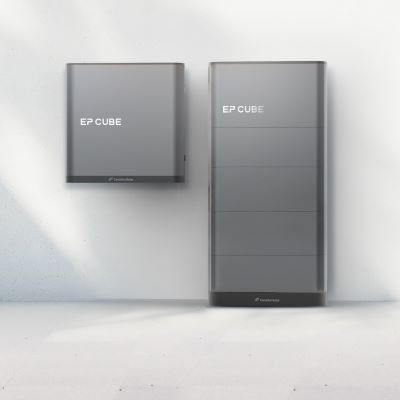
Canadian Solar, a Guelph-based solar energy company, has announced two battery products for homes and utilities through its subsidiaries CSI Solar and CSI Energy Storage to expand into a growing energy storage market.
Canadian Solar is one of the world’s largest solar panel manufacturers. The company has shipped over 75 GW of solar modules across more than 160 countries.
George Kuo, a senior director of product development for the Americas at Canadian Solar, said the company chose to develop the battery solutions to capitalize on two important markets.
“It’s a great opportunity, (a) growing space with a lot of needs for it,” he said about the utilities market. “We started with utilities and then residential is another big segment so that’s why we did the EP Cube.”
The products were showcased at RE+, a clean energy business conference held in Anaheim, Calif. from Sept. 19 to Sept. 22.
The EP Cube
CSI Solar, an arm of Canadian Solar that sells solar energy components like modules and inverters, exhibited the EP Cube. The EP Cube is a hybrid residential energy storage solution for indoor and outdoor installation measuring at 6.25 inches at its thinnest.
The EP Cube is said to be stackable for 9.9 kW-h to 19.9 kW-h capacities. A total of six units can be connected in parallel up to 119.9 kW-h of storage and 45.6 KW output. CSI Solar says it can store enough electricity to fully power the average home equipped with high-surge-current appliances and AC units.
It can store a charge from the sun during the day and retain energy for use during the night as a source of clean energy. It can store electricity from the grid as well.
Each battery module is said to weigh less than 70 pounds, compared to most residential storage devices that can weigh upwards of 400 pounds, according to Kuo.
Kuo said EP Cube can stack like Lego blocks and is designed to be easy to install and self-configurable. It aims to address the headaches of inventory management and the difficulty of installing solar energy storage products.
It was also designed for residential resiliency to help manage the cost of energy and insulate homes against blackout scenarios and natural disasters. With the increasing frequency and severity of climate disasters like megadroughts in California and intense hurricanes, Kuo said EP Cube offers a back-up when homeowners need to keep vital appliances running during a blackout or run the air conditioning when the grid is strained.
EP Cube can serve as part of a virtual power plant, which allows the homeowner to sell their produced energy back to utilities.
“To participate in that, it would mean a financial benefit for the homeowner. So, instead of looking at an energy storage system as a way to reduce cost, now they have the luxury of looking at it as a way to generate income,” said Kuo.
EP Cube is accompanied with software named Smart Gateway to control the energy flow for the home. It can interface between the home’s energy system and the grid to accommodate a transition between the battery and grid.
Additionally, EP Cube comes with a mobile app to monitor, control and commission the home’s energy system. Users can strategize their energy flow based on time of use, adjust energy to run on battery or grid power, look at the battery status and make service calls or troubleshoot.
Kuo said the reception toward EP Cube at RE+ was very positive. Attendees were drawn to its sleek appearance and it sparked comments about its flexibility, installer-friendly features and the ability to support multiple components such as electric vehicle chargers and diesel generators.
The SolBank
CSI Energy Storage, which manages photovoltaic projects and asset management, launched SolBank, a proprietary battery with up to 2.8 MW-h of energy capacity for utility-scale applications.
The company applied learned lessons from previous efforts and implemented customization features, like liquid cooling to keep the battery chemical at an optimal operating condition. SolBank also has HVAC to counter condensation, which is a problem for batteries.
It applies a lithium iron phosphate chemistry-based battery enclosure, which is said to be a safer battery chemical. It includes a battery management system that uses an active balancing technique to operate batteries in optimal condition and fire prevention methods.
The future for Canadian Solar
“I think everybody recognized the growth and direction in the whole world going toward having energy storage as the ability to both stabilize the grid and all the other benefits from it,” Kuo said. “For Canadian Solar, it is a fast-growing segment of our business and much, much attention (will be given) to it… it will be (a) very, very significant part of Canadian Solar going forward.”
CSI Solar specifically noted the benefits of the Inflation Reduction Act as a boon for the EP Cube. However, Kuo said elements of the bill like the tax credits and secondary energy production incentives are still being clarified.
He expressed optimism for the solar energy and renewables industry, despite warnings of choppy economic conditions ahead with high inflation, interest rate hikes and fears of a recession.
“Of course time will tell, but the demand for renewable energy is stronger than ever,” Kuo said. “I think we will be doing fine, this industry as a whole.”










